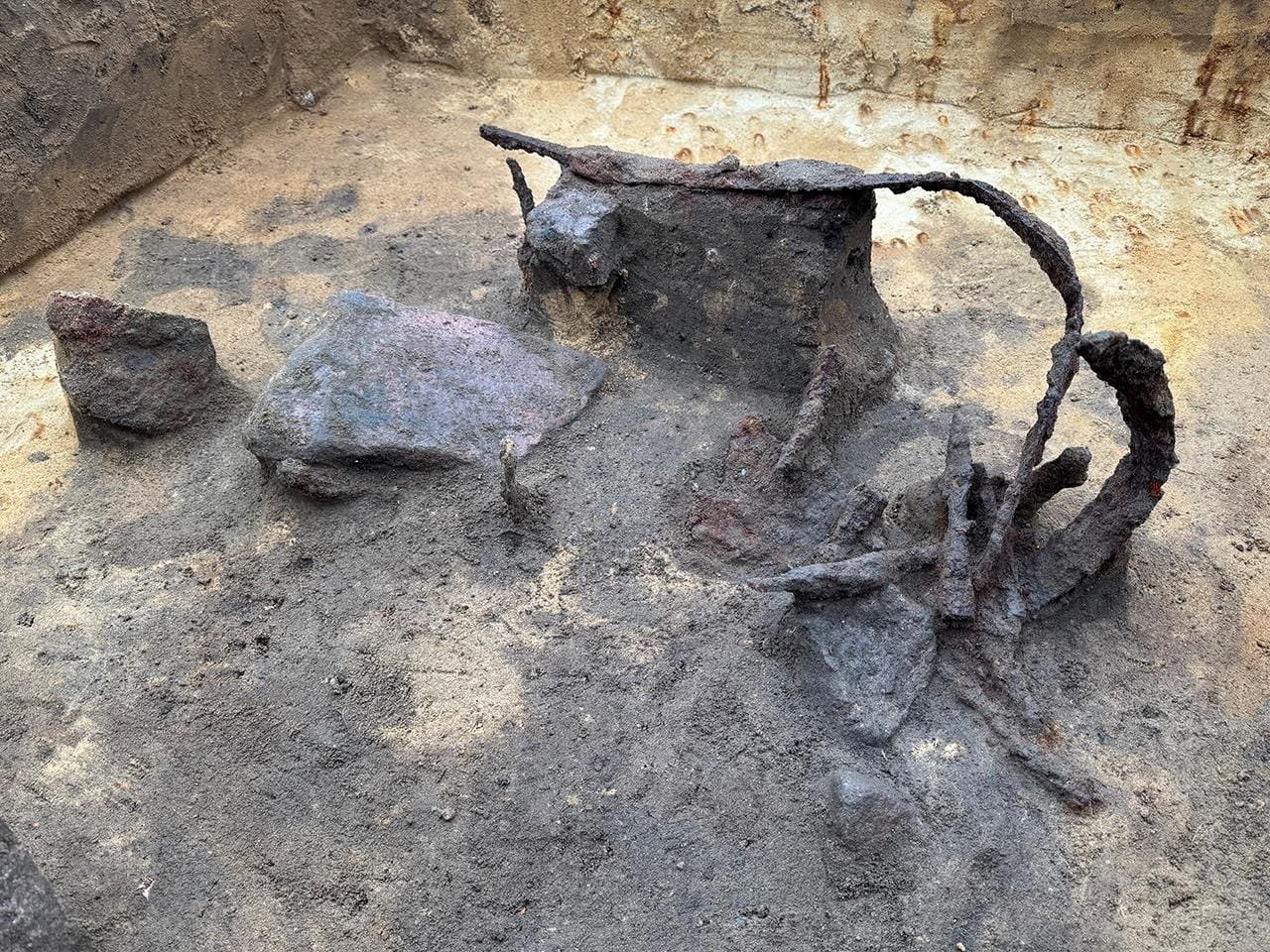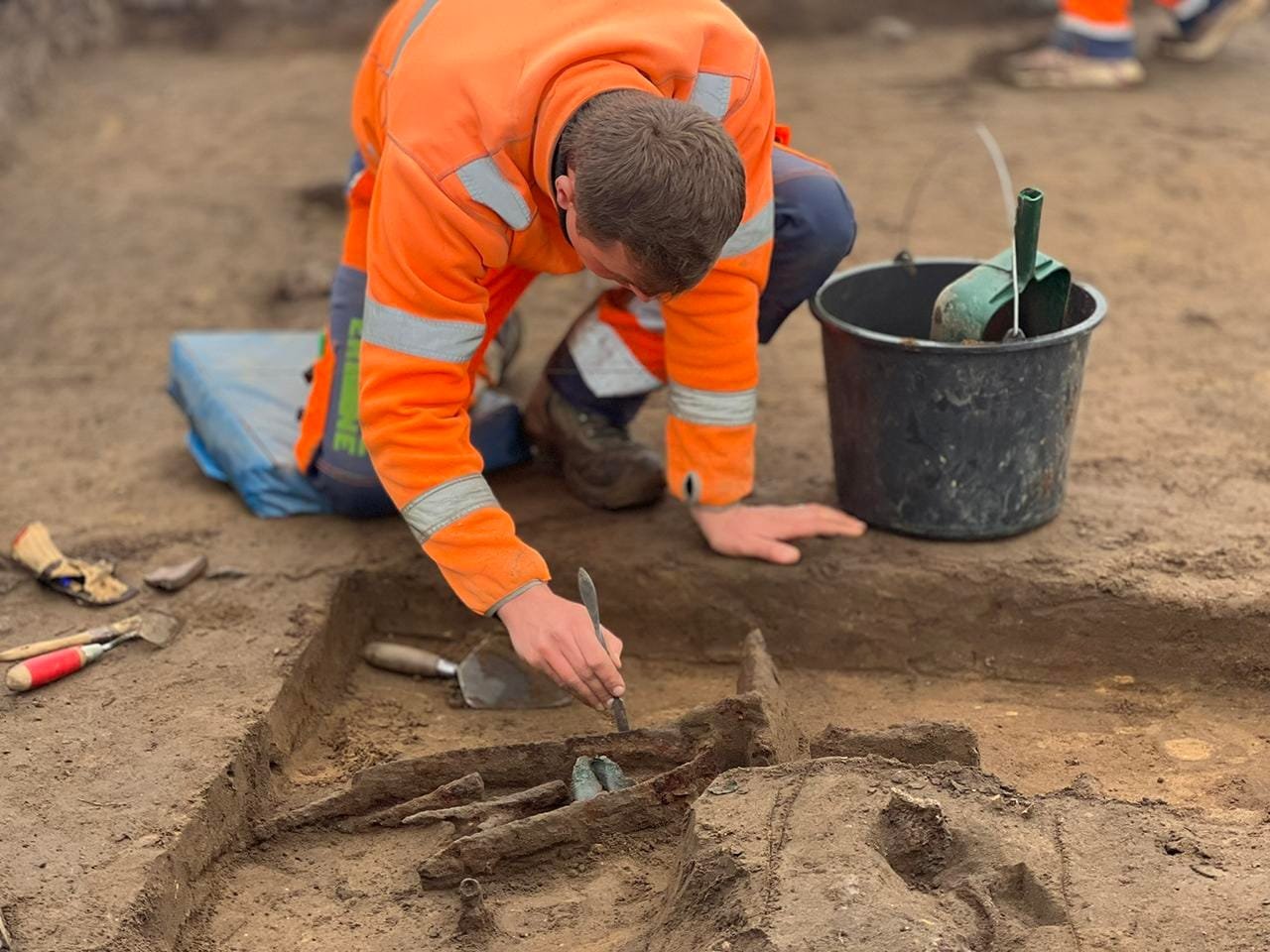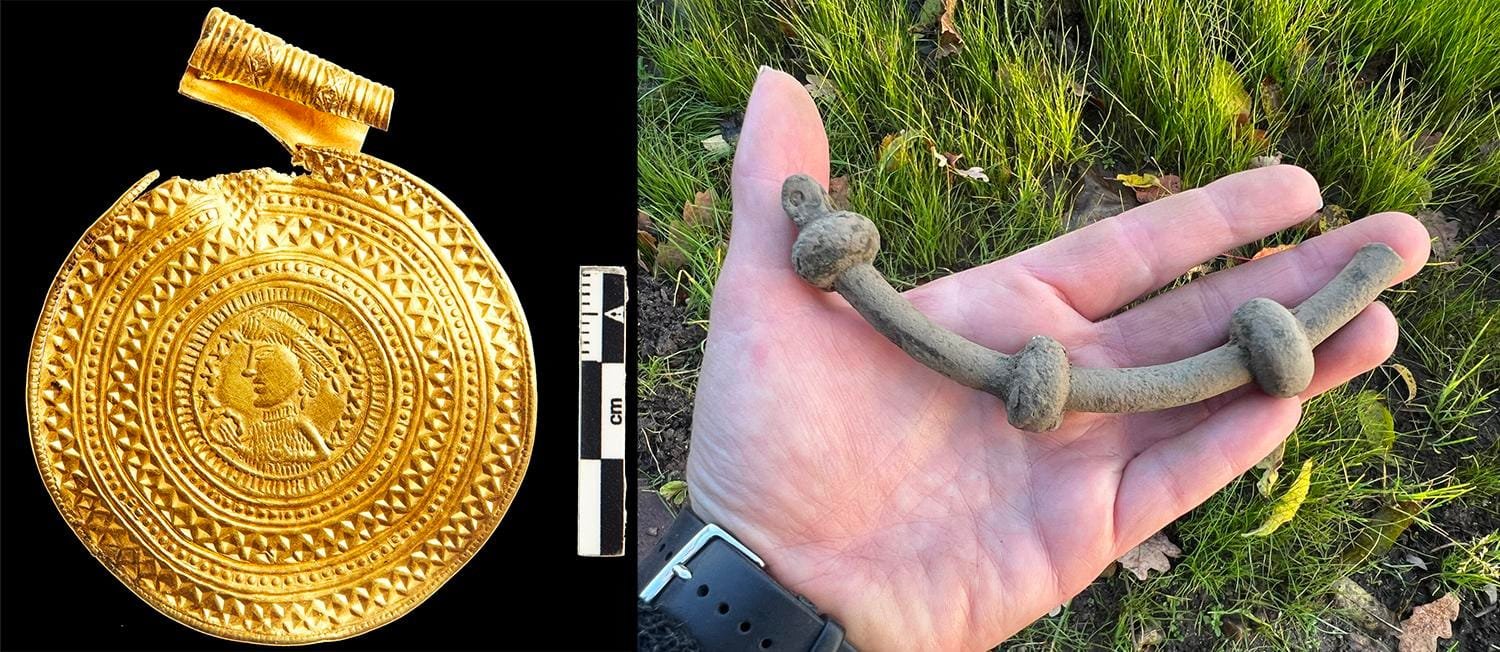Archaeologists from the Vejle Museums have uncovered an extraordinary collection of Iron Age weaponry and artifacts during excavations near Hedensted, Denmark. The finds were made at Løsning Søndermark during the expansion of the E45 motorway.
 Sword and other weapons. Credit: Vejle Museums
Sword and other weapons. Credit: Vejle Museums
The discovery includes nearly 200 weapons and items that would have equipped a small army. The arsenal comprises 119 lances and spears, eight swords, five knives, three arrowheads, one axe, a horse bridle, and a rare chainmail shirt—one of only 14 ever found in Denmark and the first recovered from a settlement rather than a burial site. Other notable artifacts include fragments of two bronze “oath rings,” symbols of power and influence in the Nordic Iron Age.
Elias Witte Thomasen, an archaeologist from the Vejle Museums who led the excavation, said: “From the very first surveys, we knew this was going to be extraordinary, but the excavation has exceeded all our expectations. The sheer number of weapons is astonishing, but what fascinates me most is the glimpse they provide into the societal structure and daily life of the Iron Age. We suddenly feel very close to the people who lived here 1,500 years ago.”
The artifacts were deliberately buried within two houses in the settlement. One deposit was made during the construction of a house, with weapons packed around its load-bearing posts, while the other was made during a house’s demolition, with weapons placed in the empty postholes. These practices suggest the offerings were part of ceremonial or sacrificial rituals linked to the residence of a powerful chieftain rather than items from a workshop or barracks.
 A Vejle Museums archaeologist excavates metal weapons. Credit: Vejle Museums
A Vejle Museums archaeologist excavates metal weapons. Credit: Vejle Museums
Archaeologists believe the weapons were likely spoils of war, as such practices of collecting and sacrificing war booty were common during the South Scandinavian Iron Age. However, further analysis will determine whether the items were locally produced or acquired from defeated enemies.
The discovery of the chainmail, an expensive and labor-intensive piece of armor, underscores the chieftain’s elite status. Such a garment was typically reserved for high-ranking warriors or leaders, and its sacrifice would have been a significant display of wealth and power.
In addition to its practical significance, the chainmail and other items bear symbolic value. The bronze oath rings, for instance, resemble depictions on gold bracteates, such as those from the nearby Vindelev Hoard, which feature figures holding rings as symbols of authority.
 The bronze oath rings (right) resemble depictions on gold bracteates, such as those from the nearby Vindelev Hoard (left), which feature figures holding rings as symbols of authority. Credit: Vejle Museums
The bronze oath rings (right) resemble depictions on gold bracteates, such as those from the nearby Vindelev Hoard (left), which feature figures holding rings as symbols of authority. Credit: Vejle Museums
Unlike most Iron Age weapons caches, typically found in bogs or funerary contexts, this discovery provides a rare glimpse into life within a settlement. The site’s unique nature adds valuable context to the understanding of social and military structures in Denmark during the waning days of the Roman Empire.
The excavation leader Thomasen remarked on this broader significance: “The finds allow us to connect the dots between daily life, warfare, and ritual practices. This site is a key to understanding the resilience and influence of Iron Age societies on the northern edge of the Roman Empire.”
Further analysis of the items, including their origins and production methods, is underway. This research is expected to enhance understanding of the warriors, their leaders, and the intricate social networks of the Iron Age.
More information: Vejle Museums





